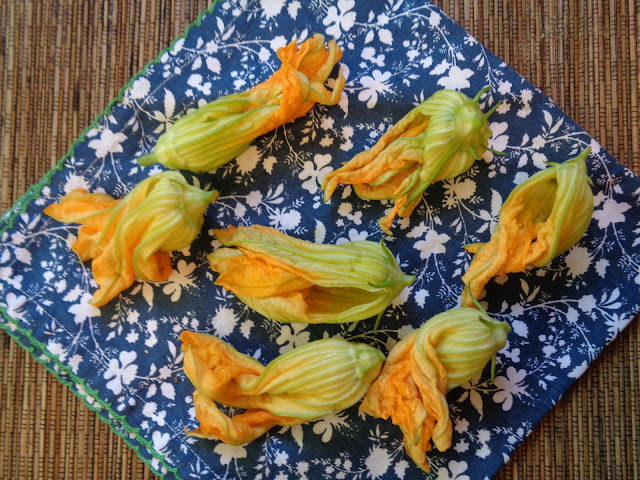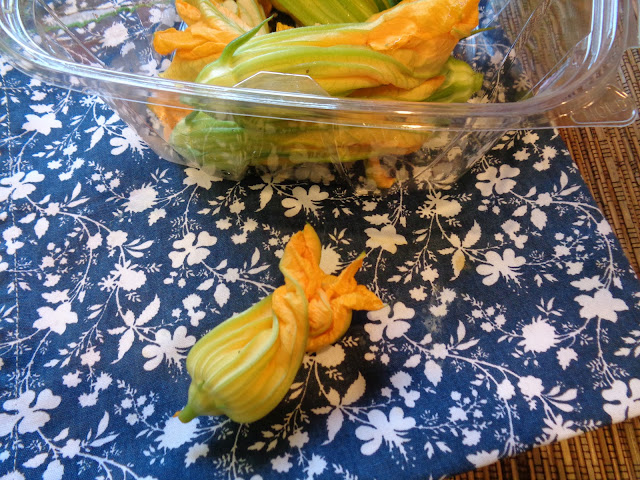

Then you make a simple tempura batter consisting of flour, salt and sparkling water and VERY CAREFULLY dip the stuffed flowers in the tempera and fry them in the oil. This takes some finesse and tender loving care, but is overall easy.
I liked this fried zucchini flower recipe so much better than Ina's Zucchini Flower and Leek Frittata. The texture of the zucchini flowers in the frittata was somewhat soft, hard to cut, and maybe a little slimy or less than pleasing. The texture in Giada's Fried Cheese-Stuffed Zucchini Blossoms was way better. I loved the light crispy batter on these zucchini flowers and they were really tasty dunked in some marinara. Now for the ultimate question: Would I try to source zucchini flowers again? Would I make this recipe again? No, I don't think so. While I enjoyed cooking with zucchini flowers and trying two different recipes, it's not something that I loved or would seek out and make again. But, I am very happy to have tried it and crossed it off my list!
Fried Cheese-Stuffed Zucchini Blossoms
Adapted from Food Network
by Giada De Laurentiis
Makes 8
1 cup all-purpose flour
1 cup sparkling water
3/4 teaspoon salt, plus extra for seasoning
1/3 cup (2 ounces) goat cheese, at room temperature
2 tablespoons (1 ounce) cream cheese at room temperature
2 teaspoons heavy cream
1 tablespoon chopped fresh basil leaves
1 green onion, finely chopped
black pepper
8 zucchini blossoms*
vegetable oil, for frying
Optional: marinara sauce for dipping
*Cook's Note: Zucchini blossoms can be found at farmer's markets and specialty grocery stores. As an alternative, try using baby bell peppers. Cut off the tops and remove the seeds. Fill with the cheese mixture and dip the cut end in flour before dipping in the batter.
In a medium bowl, whisk together the flour, water, and salt until smooth. Set aside.
In a small bowl combine the goat cheese, cream cheese, heavy cream, basil, and green onion. Mix until smooth. Season with salt and pepper, to taste. Spoon 1-1/2 to 2 teaspoons filling into each blossom. Close the blossoms and gently twist the petals to seal.
In a large heavy-bottomed saucepan, pour enough oil to fill the pan about a third of the way. Heat over medium heat until a deep-frying thermometer inserted in the oil reaches 350F (if you don't have a thermometer a cube of bread will brown in about 1 minute.) Dip the stuffed zucchini blossoms in the batter and allow any excess batter to drip off. Fry for 1 to 2 minutes, turning occasionally, until golden brown. Allow the cooked blossoms to drain on paper towels.
Season with salt and serve with your favorite marinara sauce or vinaigrette.
June IHCC Potluck @ I Heart Cooking Clubs










































